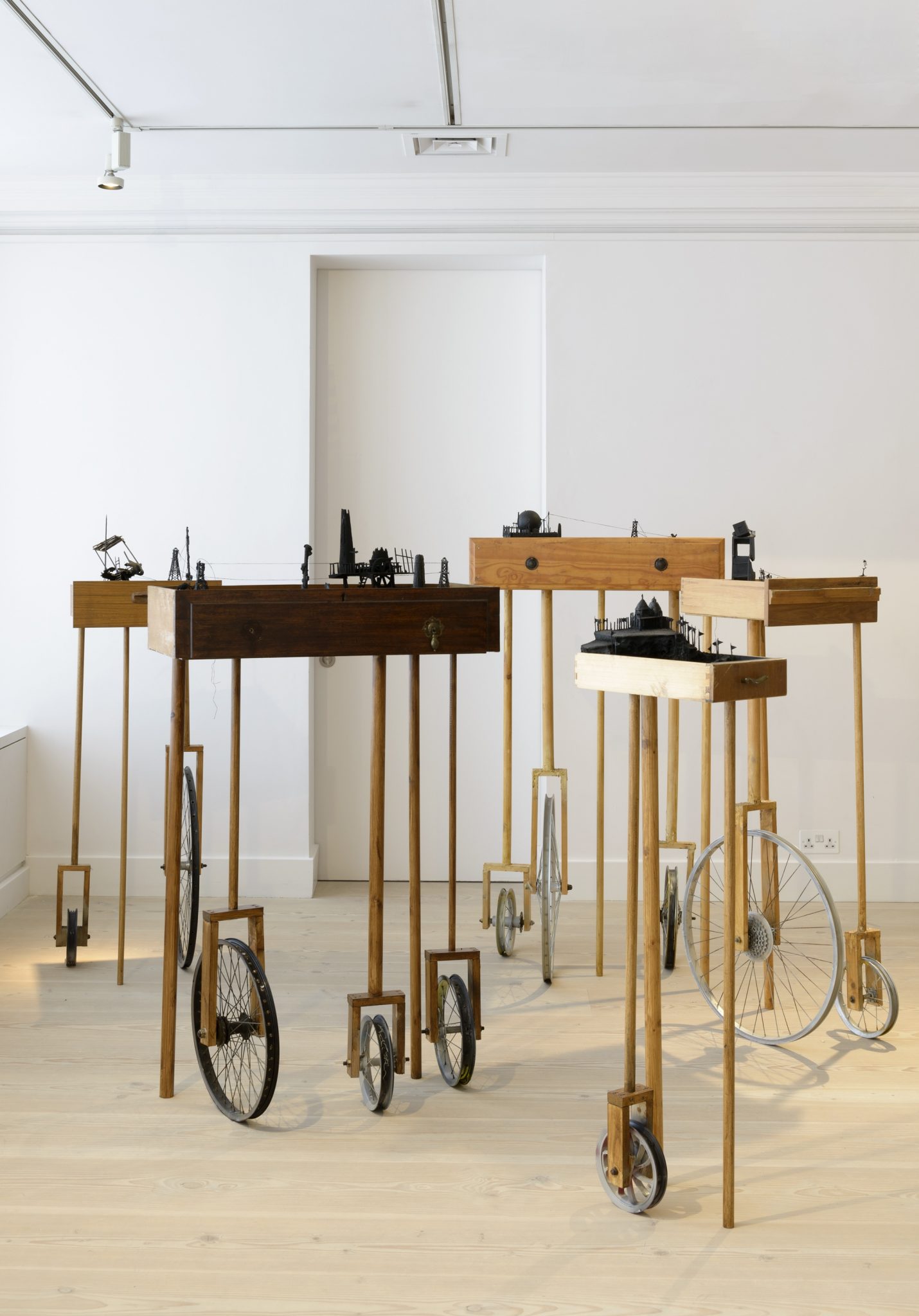As a British Asian, Saad Qureshi is particularly interested in what it means to be other or to belong in a multicultural society. Christian and Islamic narratives appear to provide significant source material for his enquiry, and here he proposes the Tower of Babel as an ideological blueprint for Other Crescents, Other Moons. Qureshi describes this series of figurative sculptures and drawings as ‘mindscapes’; derelict model worlds ¬based on other people’s recollections of places he is also familiar with. The view is often dark, in every sense, but Qureshi’s handling of miniature matter is exquisite. This combination, for the most part, is incongruous enough to keep one in touch with the artist’s role as mediator and the notion of memory as an evocative but unstable interpretive tool.
All works in the exhibition are derived from a series of interviews Qureshi conducted after posting ads calling for residents to donate descriptions of places he visited. Eastern architectural references aside, it is not clear where he actually went and over what time period. But given that Qureshi’s interest here is the selective nature of memory, one can understand a reticence to tie the process down with too many facts. The ground floor space is dominated by the work of the exhibition title: a huge black doughnut-shaped sculpture that appears to have crashed to the ground and twisted into a partial sphere on impact. The scale is impressive enough to suggest military or industrial purpose, but not monumental to the point of ruling it out as an elaborate theatre prop.
Shadow play on the surrounding walls brings one’s attention to tiny structures and scrubby black swatches of Astroturf adhered to the sculpture’s surface. They could be shrunken oil-field paraphernalia from a bizarre Airfix kit. Delicate carbon-paper drawings hung nearby, meanwhile, might function as the plans for assembly. Upstairs, a series of tiny models depicting scenes of architectural decay and environmental damage (all coated in heavy layers of black paint) sit atop teetering assemblages of wheels, wood and drawers. Qureshi’s use of materials to convey graveyards and falling power lines, for example, is compelling, but the supporting structures seem rather mannered in comparison. A slick of wood varnish visible over a screw puts an uncomfortable gloss on the makeshift associations here: with Arte Povera and an inventiveness born of extreme deprivation.
The perpetual shift, from work to work, between notions of conflict and child’s play, invites obvious comparison with Jake and Dinos Chapman’s Hell (2000). In this case, however, the lack of any discernible human narrative means that violence remains the metaphorical elephant rather than the dominant sensibility in the room. Based on oral accounts of places, reinterpreted by the artist, these are not sites or craft that necessarily have or continue to exist. Yet like the Tower of Babel, a failed scheme to build a city that would reach the heavens, Other Crescents, Other Moons embodies aspects of both the folly and genius of human invention. How the viewer projects her own narrative into each manifestation of a place, and how much of this may be based on secondhand media or other source material, is an important element of the encounter. For however ‘elsewhere’ each environment might appear, personal points of reference can always be found: from the high-spec curvilinear forms of Zaha Hadid’s buildings, to the burnt remnants of Brighton Pier before it fell into the sea. Whether or not these arrive in the mind as a result of the accounts as recorded, the artist’s reworking of them or the individual’s desire to locate themselves within the work is open to question.
